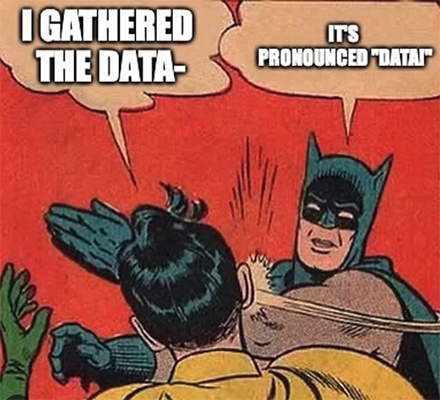 |
||||||||||||
|
||||||||||||
| Navigating the Junkyard: Unraveling the Challenge of Quality in Programmatic Supply Chains |
 |
| We hesitate to liken the programmatic supply chain to a junkyard, but it needs deep cleaning. In programmatic advertising, where digital real estate is bought and sold at the speed of light, one constant thorn in the side of the industry is the persistent presence of low-quality supply. July's Jounce Media report highlighted this problem, revealing that top SSPs often peddle as much sub-par inventory as premium fare. This sub-premium stock encompasses made-for-advertising sites, invisible ad placements, and content accessible only through a tangled web of unnecessary hops in the supply chain. The allure of premium supply, on the other hand, lies in its direct path to influential consumer-targeted content. The battle against poor media quality has been waged fiercely this year, with the industry banding together to curb the flow of funds to these ad-gaming, made-for-advertising websites. However, as Chris Kane, the founder of Jounce Media, humorously remarked, the real challenge is capping opportunities without selling the digital junk. This predicament is not lost on SSPs, as they grapple with potentially losing business to competitors if they turn their backs on sub-premium inventory. "The entire fucking problem is marketing is a best guess of outcomes," as an anonymous executive put it, emphasizing the complexity of metrics and incentives that form the crux of this challenge. The industry realizes that siphoning low-quality inventory into private marketplaces could be a plausible solution, making premium the norm, not the exception, in the ad-tech landscape. As programmatic campaigns continue to evolve, discerning buyers and practitioners are proving that steering clear of the junkyard is possible and beneficial in driving tangible business outcomes. |
| The industry is aware of the issues in the programmatic supply chain. Jana Maron wrote about it in "Musing on the Bloated Supply Chain." Meron asserts that the bloat in the supply chain stems from a lack of understanding of the supply chain as an ecosystem. ‘ "Like all ecosystems, as they become more complex, their impacts are noticeable across the entire ecosystem rather than in one area," wrote Meron. "We have been building the web ecosystem in silos, not realizing that when we make changes in one place, it impacts the others." Complexities like this have allowed low-quality supply to flourish in the programmatic marketplace, allowing SSPs and publishers to drive revenue from them. Many players in the ecosystem often allow low-quality supply to stay because it shows good performance metrics and is ultimately a source of income. According to industry sources, "data shows that poor-quality media is routinely sold. SSPs are a fitting vector for analysis because they serve as a clearinghouse for all the content available to sell on the web. But SSPs are just one actor in a broader system that incentivizes monetizing low-quality content." Not all players are playing in the junkyard and relying on low-quality supply. Ad Age shouts out Colossus SSP, Kargo, and Trust X for committing to high-quality supply. Ultimately, it is better for publishers, marketers, and consumers, who should be the top priority. |
|
| Yield Optimization With a Commerce Twist |
| The winds of change are blowing in the world of retail media. By 2025, Criteo estimates $42 billion will be spent in the space, excluding Amazon and China. Retail media has grown roughly three times faster than Search, twice as fast as Social, and looks set to surpass linear TV advertising spend by 2025. Retail media isn't just the domain of the desktop. Last year, smartphones accounted for over 70 percent of all retail website visits worldwide —and generated the majority of online orders compared to desktops and tablets. Consumers are smarter and savvier than ever before. They're researching online across multiple platforms before hitting the "buy" button. At the same time, advertisers are pouring budgets into commerce-focused media and increasingly looking at full-funnel journeys when planning their media buys and audience activation strategies. Why? Because they recognize the need to capture and influence potential shoppers at all stages of the decision-making process—before they even visit a retailer's site. |
| To tap into the huge revenue opportunity commerce media presents, publishers need a way to seamlessly blend media with commerce to boost revenue and maximize potential yield. How do media owners make this happen? They can enrich their inventory with unique commerce data, such as shopping category affinities, purchase frequency, price point, and more. This rich data can supercharge CPMs and drive commerce outcomes for their advertisers. These factors clearly demonstrate a growing demand among publishers for a commerce-focused SSP. One that can access powerful commerce data, deliver innovative ad formats, and help advertisers find and engage customers at all stages of the shopping journey to drive better ROAS. Criteo Commerce Grid is the only SSP purpose-built with this in mind. It enables publishers to enrich inventory with commerce signals and maximize advertiser outcomes at scale. It also equips publishers with tools to unearth valuable insights about how their audience is shopping, opening the door to new opportunities for advertiser partnerships and editorial strategies. |
| Digital Advertising’s Inherent Resiliency: The Recession That Wasn't |
 |
| The News: Magna raised its 2023 US ad growth forecast from 4.2% to 5.2%. If this prediction holds up, revenue will reach $337 billion, up from the prediction Magna made in June of 4.2%. How did this happen? The Recession that Wasn’t: Late last year, economists were issuing dire warnings about a recession that could begin as early as the first quarter of this year. The incessant talk of a recession sent waves of fear across the economy, leading business leaders to adopt a defensive posture. In the US, 125,000 people were laid off as recession fears spiked. Publishers and ad tech companies weren’t immune; the Washington Post, BDG, Recount, Gannett, Recurrent, CNN, Netflix, Acast, Future, Warner Bros. Discovery, and G4, among others announced layoffs. But a funny thing happened. The job market remains strong (the unemployment rate in July was just 3.4%), which means consumers are still spending despite inflation. And when consumers are spending, so must advertisers. Magna research shows that ad spending in 2Q 2023 is up 4.4% over 2Q 2022. What’s more, ad spending will increase 5.6% next year without additional spending on political campaigns and tent pole events like the Summer Olympics. Traditional & Digital on Different Trajectories: No one predicted that spending on digital advertising would contract during a recession. Concerns centered on slowing that growth, especially when compared to the explosive growth during the pandemic. Despite deep cuts in advertising from sectors that require people to show up in person, digital advertising in 2020 grew 12%. And it’s still enjoying impressive growth, growing 8.7% from 2Q 2022 to 2Q 2023, according to Magna. Social media advertising grew 12% in the same timeframe. At 9% growth, retail media wasn’t far behind. Meanwhile, linear TV, radio, print, and cinema saw ad spend plummet by 4.1% YOY. Local TV declined 5%, and publishing dropped 7%. Magna forecasts that digital media owners’ revenues will increase by 9.8%, while traditional media companies will see a 2% decline. Are the declines in traditional media tied to recession fears? “The advertising world in general, like any business venture, will inevitably be influenced by economic conditions, and expert predictions and forecasts will significantly affect all businesses,” explained Murry Woronoff, Director of Marketing Research and Consumer Insights at Adtaxi, a digital marketing agency. In other words, when recession fears are piqued, there’s no avoiding certain negative events like layoffs. However, the downturn in traditional advertising has been following a longer-term trend. In other words, something other than the recession is causing the decline. |
| According to research by Woronoff, the average US adult spends about one-third of their day online, equating to nearly half of all waking hours involved in some digital activity, whether working, shopping or consuming content. “The momentum towards digital has been consistent and undeniable, irrespective of economic situations, which means digital ad spend will grow faster than traditional methods,” he said. But, he doesn’t believe that traditional media will go away, noting that radio didn’t supplant newspapers, and TV didn’t supplement radio. “Digital isn’t going to knock traditional media off the planet.” This is why his digital agency leans into a mix model, leveraging traditional-born platforms such as Streaming TV. Having worked in broadcast, cable, and print, Woronoff has more of a long-term perspective. “Newspapers have done an amazing job making the transition from print to digital, and they’ve set an example for other types of traditional media to follow.” The upshot is that the consumer’s move towards digital devices and channels means that digital advertising can withstand talk of recession and other catastrophes until some other major innovation comes around that makes digital obsolete. |
| Around the Water Cooler |
| FTC Urges Brands to Steer Clear of 'Blurred Advertising' in Children's Marketing The FTC is giving brands a nudge to keep kids' marketing straightforward and free of any confusing twists. This guidance steers brands towards ethical and honest practices targeting our young audience. (Marketing Brew) Vice Media Group's Cory Haik Reveals Publishing Success on the Horizon Cory Haik from Vice Media Group spills the beans on their publishing game, revealing they're on the cusp of turning a profit. Find out how they're steering the ship toward smoother waters. (Digiday) Gen Z's AI E-Commerce Adventures Hop on the AI express to the future of online shopping! Gen Z unveils their thrilling visions of how artificial intelligence will transform and elevate the e-commerce realm, promising an adventure in retail like never before. (Ad Age) |
 |
||||
|
||||
 |
||||
 |
||||
|
||||
| @{optoutfooterhtml}@ |
L








